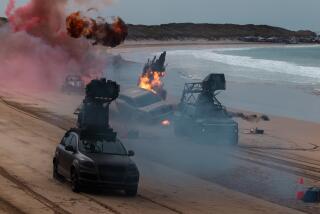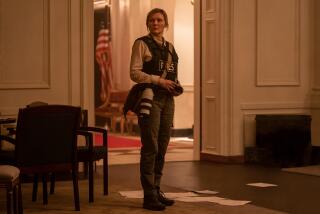Akira Kurosawa screenings at Billy Wilder Theater
Long before his death in 1998 at the age of 88, Akira Kurosawa was widely regarded as the world’s greatest living director and one of the most influential filmmakers of any era. His 1950 “Rashomon,” a period tale in which a bandit’s assault on an aristocratic woman traveling through a forest, is told from four different viewpoints, took the grand prize at Venice in 1951 and went on to win a special Oscar as the best foreign film of the year (before that prize was a regular category). Before then, the rich and long-established Japanese cinema was largely unknown in the West.
Hollywood influenced Kurosawa, who admired John Ford and others, and he, in turn, influenced Hollywood. “Rashomon” inspired a Broadway play and a Hollywood remake, “The Outrage.” “Seven Samurai,” Kurosawa’s grand period epic about a group of scruffy samurai who commit themselves to defending a village against bandit attacks, was transformed into the popular Hollywood western “The Magnificent Seven.” His rowdy, amusing samurai movie “Yojimbo” was reworked by Sergio Leone into “A Fistful of Dollars,” establishing the spaghetti western — and launching the stardom of Clint Eastwood. And George Lucas has acknowledged that Kurosawa’s lively period adventure “The Hidden Fortress” was a key inspiration for “ Star Wars.”
Kurosawa’s films could be entertaining as well as profound, and his range, depth and scope — his sheer fluidity and bravura — were masterful. He had a remarkable 18-year collaboration with Toshiro Mifune, the handsome, charismatic international movie star whose talent was on par with his director’s. Upon Kurosawa’s death, Steven Spielberg declared him “the visual Shakespeare of our time.”
Kurosawa was a tall, commanding presence, who could be formal, though always polite, and, depending on mood, also relaxed and funny, as during an interview on his 80th birthday, which he spent at the Beverly Wilshire Hotel. “I sure don’t feel like I’m 80,” he said through an interpreter. “Nothing special is planned. We’ll just go out to dinner. To be honest, I feel like behaving like a total fool, but I can’t because my producers are here,” he said, indicating his son Hisao and his nephew Mike Y. Inoue, who retorted, “You’ve been doing that all along!” Five years earlier, Kurosawa spoke modestly of his work. “I just make up stories and film them. When I am lucky, the stories have a lifelike quality that makes them appealing to people, and the film is successful.”
It’s never enough for a filmmaker’s position in the pantheon to remain enduringly secure; his films must be available from time to time to attract new and younger audiences; for Kurosawa, a master of the visual, his works cry out for the big screen to appreciate their full impact. Consequently, the UCLA Film & Television Archive presents The Centennial Celebration: The Films of Akira Kurosawa, Part II. The retrospective runs Friday to Aug. 29 in the Billy Wilder Theater at the Hammer Museum. (310) 206-3456; https://www.cinema.ucla.edu.
The series begins with 1960’s striking black-and-white “The Bad Sleep Well,” in which Mifune played an idealistic businessman bent on exposing top-level corporate corruption. Saturday’s offering is the director’s gritty, compassionate 1957 adaptation of Gorky’s “The Lower Depths.” Here are some other highlights:
Aug. 13: “No Regrets for Our Youth” (1946) reveals the drastic consequences of growing political repression and military aggression in Japan in the ‘30s and its conscious-raising effect upon a young woman (Setsuko Hara).
Aug. 15: “Red Beard” (1965) is a richly detailed saga of an aristocratic 19th century physician who devotes his life to serving the poor. The film took two arduous years to make and led to a break between Kurosawa and Mifune.
Aug. 20: “Ikiru” (To Live) (1952) is one of Kurosawa’s greatest films, which starred Shimura as a petty bureaucrat, who in the film’s unforgettable final scene, sits in a swing under falling snow, dying but content in his belief that he has succeeded in giving his life meaning.
Aug. 22: “Throne of Blood” (1957) is Kurosawa’s bold adaptation of “Macbeth,” performed in the manner of the highly stylized Noh theater and starring Mifune and the formidable Isuzu Yamada.
calendar@latimes.com
More to Read
Only good movies
Get the Indie Focus newsletter, Mark Olsen's weekly guide to the world of cinema.
You may occasionally receive promotional content from the Los Angeles Times.






